Michel de Broin
Castles Made of Sand
2015–2016; 500 x 160 x 200 cm; conveyors, pneumatics, stainless steel mould, tide clock, controls, sensors, video
2015–2016; 500 x 160 x 200 cm; conveyors, pneumatics, stainless steel mould, tide clock, controls, sensors, video
A large machine sits in awkward silence amid the inner workings of capital finance. At one end of its long conveyor belt is a sandcastle. At a glance, the castle resembles the turreted facade of the Royal Canadian Mint. But its form has slowly dried and collapsed, its pinnacles and battlements lie cracked and eroded. Outside the office window, a modern cityscape of glass and brick spreads out along the shore of Lake Ontario. The decaying castle is knit into the view.
Mysterious forces prevail. A small panel fixed to the wall above the castle displays a sequence of digital timestamps. Each tracks gravitational forces at work: a harmonic coherence of cosmic powers that results in a tide. As the tide turns—at approximate intervals of 12 hours, 25 minutes and 14 seconds—the machine momentarily revives.
The tide turns. Time and energy collide. Entropy is reached. The conveyor clicks into motion. The invisible hand of gravity tips the castle ruin over the edge. There is no witness to the castle’s final moment. The mechanism that determines its fleeting existence—its bankruptcy—remains beyond control.
The sand is consumed by the machine. Its mouth is a black hole, a mysterious void that attracts and absorbs raw matter and nullifies time and form. Yet an end is also a beginning. An agitator mixes a precise ratio of water with the sand. Water is the fatal force and the binding element. Destruction and creation are fixed in a fine balance.
Sand rubble travels via a screw conveyor along the machine’s length. At its opposite end, a spout piles ten litres of the now aerated sand onto the conveyor belt. This is the hourglass, a sand clock that marks this Sisyphean labour, this perpetual return to the beginning.
The framework of a press looms over the centre of the machine. The sand pile moves slowly, inescapably, toward its moulded stainless-steel jaws. Pneumatic energy—another invisible force—has been quietly stored between tides. The conveyor stops; the press closes tight with 4000 pounds of pressure. It sets in an elemental contradiction. Sand is a composite of rock, mineral, glass, bone—a rough sedimentary history of existence. Air is ungraspable, transitory, ethereal. The simple task of shaping sand into a castle over a few seconds exhausts an immense invisible power.
Like a wave, the conveyor carries the newly formed castle from its mould. The old has become new; tidal forces fade; the machine falls silent. The castle has returned. It is the same, yet not the same. No two sandcastles are. The elliptical turning of the spheres—celestial, social, economic—continues eternal. Our gaze moves past the castle to the cityscape beyond. The stage is reset; the inevitable collapse begins anew. The infinite and the finite locked in a play of cyclical returns that never ends.
Michel de Broin (b. 1970) has exhibited his work internationally since the late 1990s, working in a range of media that includes sculpture, installation and video. Many of his creations revamp ordinary things—bicycle paths, staircases, garbage dumpsters, office chairs, refrigerators or cars—into participatory works designed to provoke and confound the boundaries of linear thinking.
A graduate of l’Université du Québec à Montréal (MFA, 1997), Michel de Broin has been the recipient of numerous honours, notably the Sobey Art Award, Prix Pierre-Ayot, Conseil des arts et des lettres du Québec, The Canada Council for the Arts, and awards from the Krasner-Pollock Foundation in New York, and the Harpo Foundation in Los Angeles. In 2013, a major retrospective of his work took place at the Musée d’art contemporain de Montréal. Michel de Broin lives and works in Montreal, where he is represented by Galerie Division.
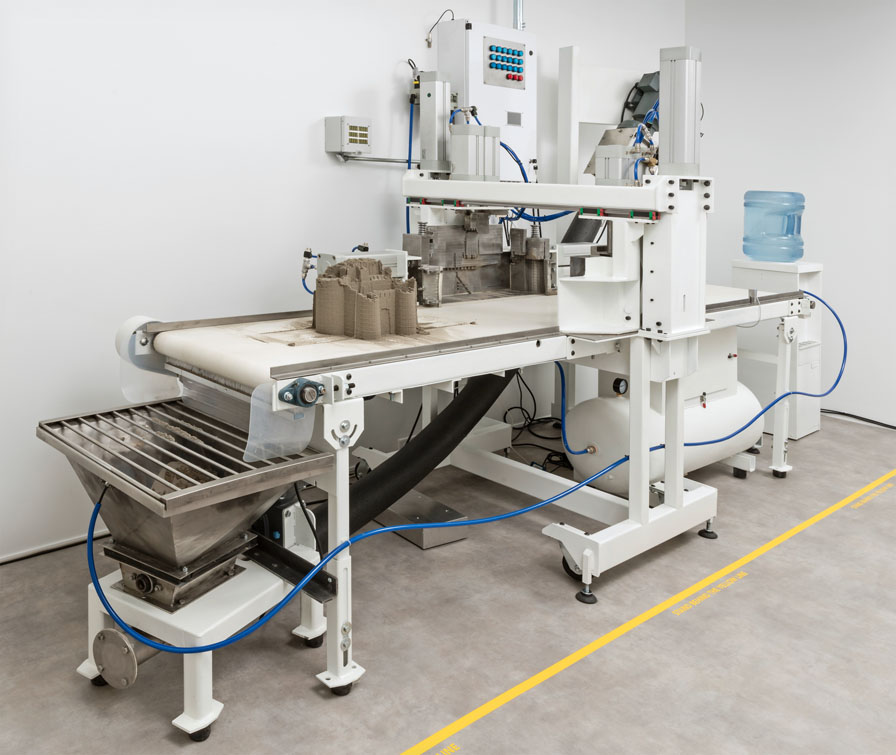
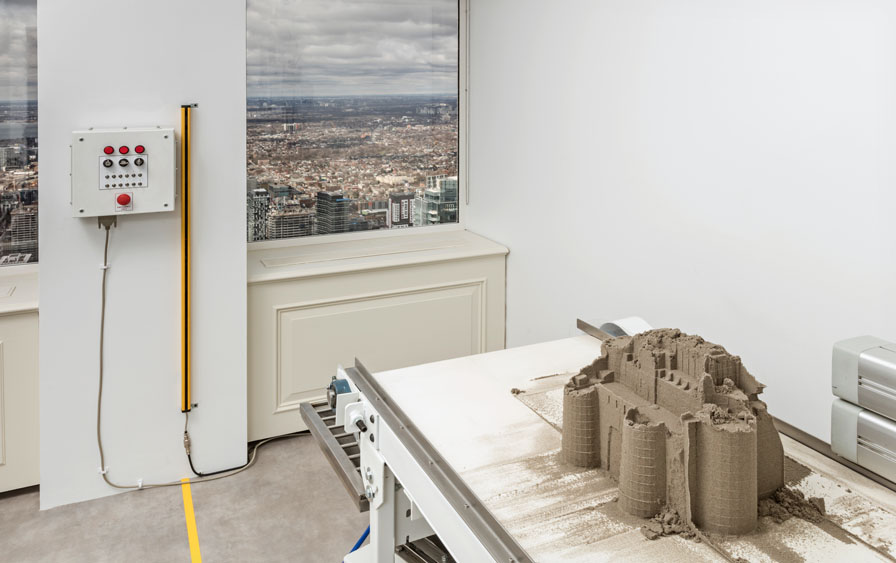
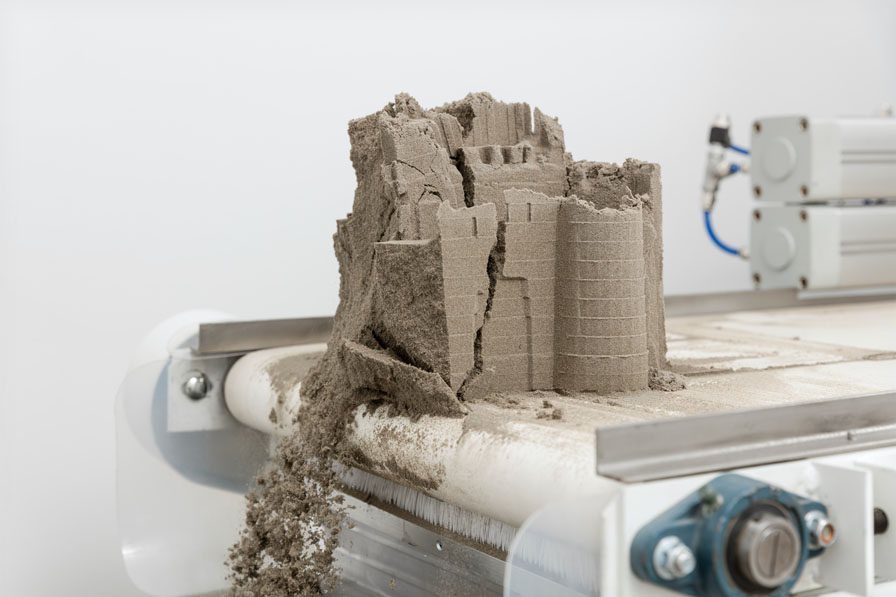
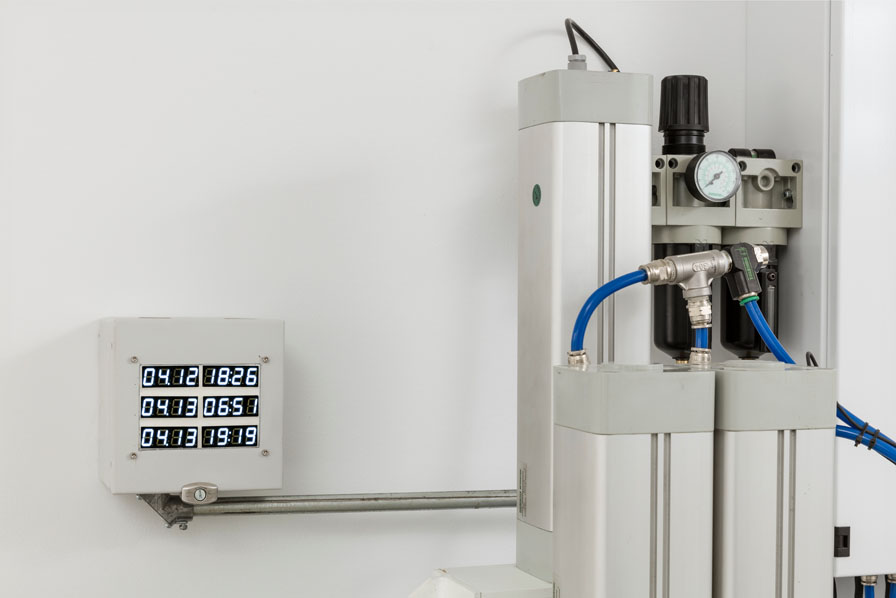
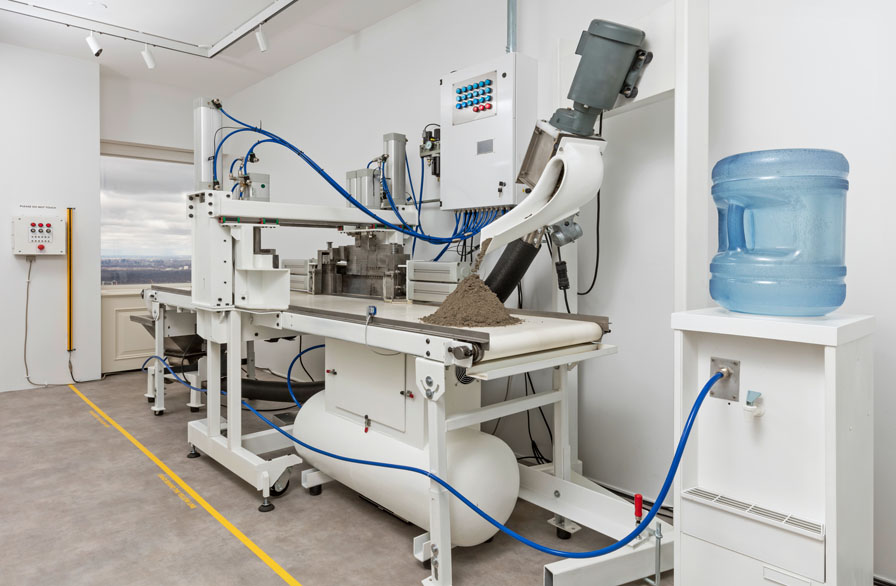
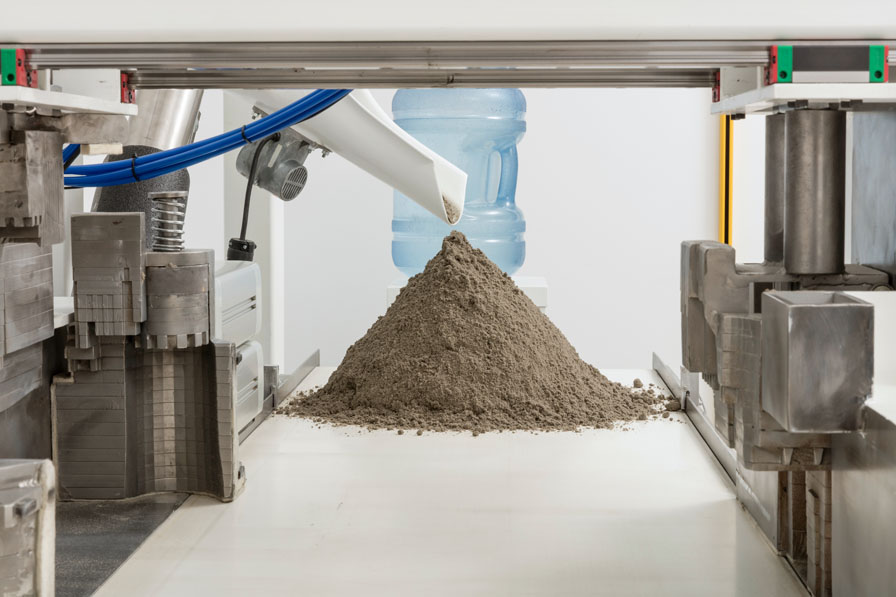
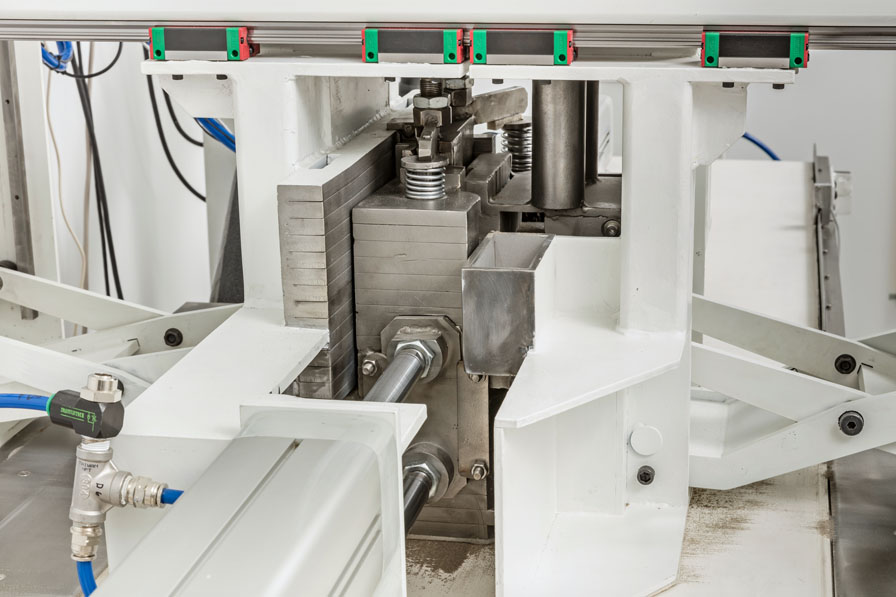
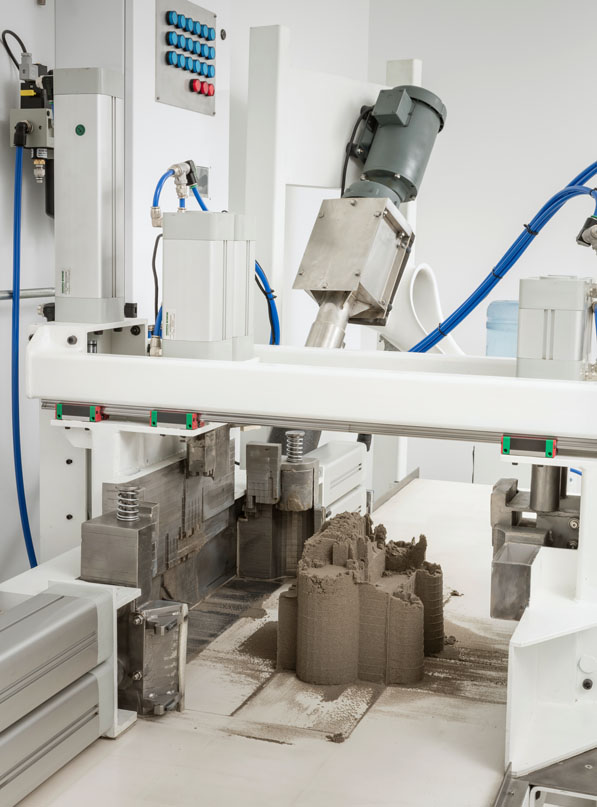
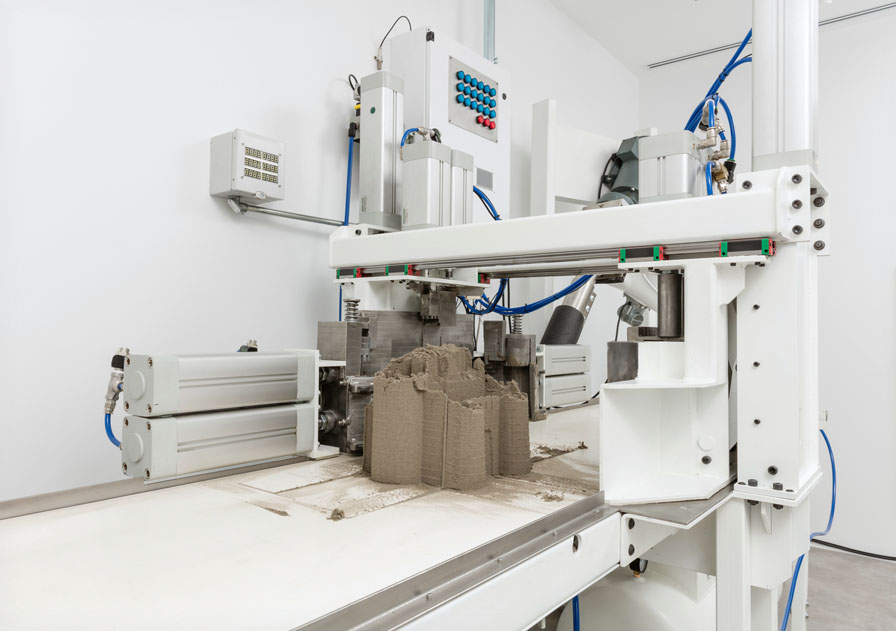
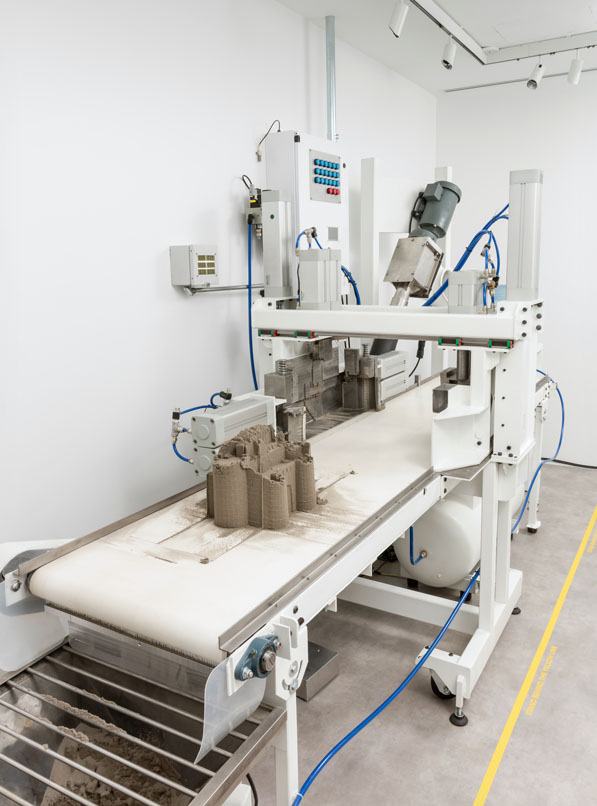
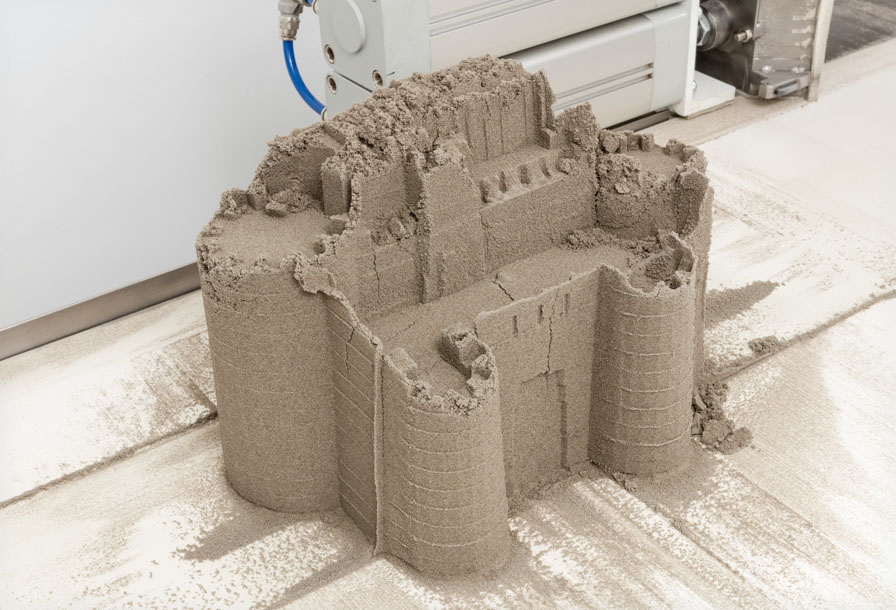
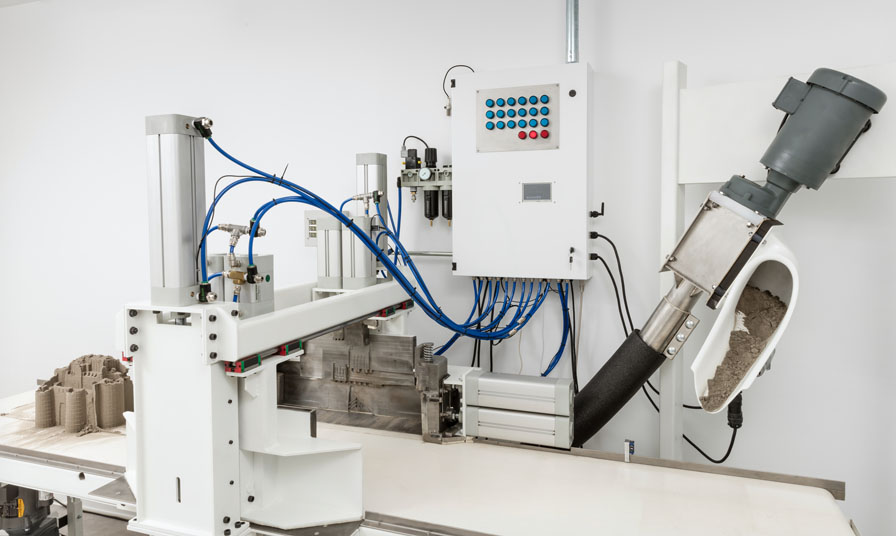
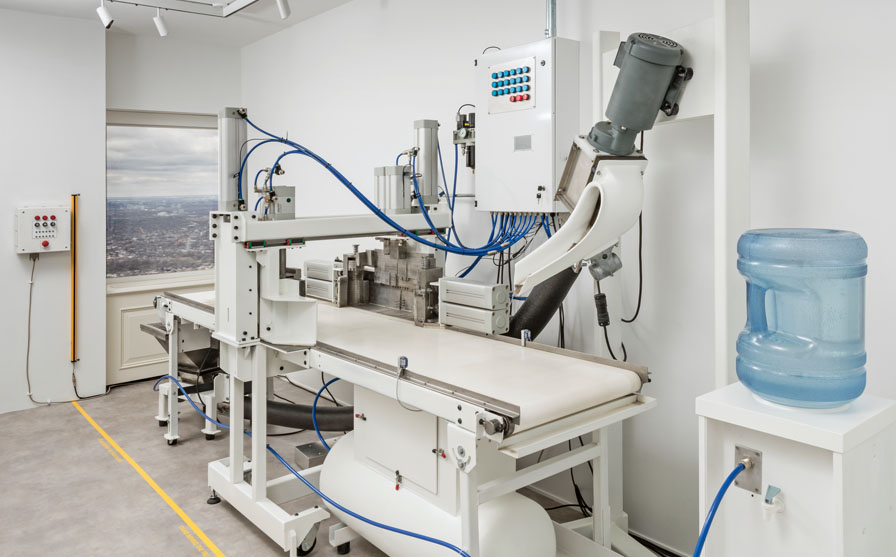
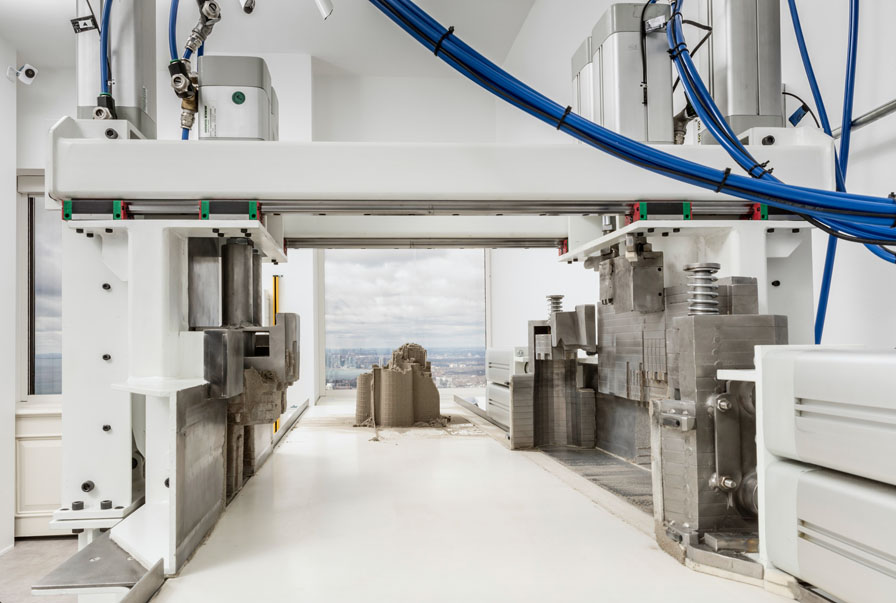
Castles Made of Sand—a project by Michel de Broin, video by Jean Pierre Aubé, duration 4:13
Sand Castle—Building castles in the sky is a metaphor for fantasizing about visionary schemes and hopeless projects. It also refers to the art project itself. Building a sand castle machine is an almost impossible endeavor, because the system contains its own peril: a single grain of sand in the gears can jam the whole machine. Sand embodies a tension between circulation and accumulation. It is formed through circulation, wear, and fragmentation of matter over time. But sand is also a primary component of construction—concrete and glass buildings are composed of a fixed assemblage of sand. Circulation and accumulation are also the main functions of the banking system. The sand used in this project was collected from the beaches of Sandbanks Provincial Park, Ontario.
Tide Clock—The artwork is activated by tidal phenomena. Tides come in cycles, propelled by the gravitational forces of planets. The Moon's orbital progression in the sky has the greatest effect on the tides. They occur approximately twice a day, when the First Canadian Place tower is in the axis of the moon.
Cycle—While the moon rotates around the earth, a sand castle slowly erodes on the conveyor. When the tide occurs, the castle is transported to the end of the conveyor, which causes its final destruction.
Command Key—As the castle collapses, the Command Key causes the machine to recycle the remnant sand and a new process begins.
Conveyor—The rubble is retrieved at the bottom of the screw conveyor. A powerful mixer stirs water into the sand, supplied by an office water dispenser, adjusting moisture to maintain a level of 2.5 percent of water by volume. The screw conveyor elevates the sand up to the spout where it drops back down onto the belt conveyor, creating a pile of the exact volume of recycled material needed to form a new castle. The pile is then transferred a few feet away, into the mechanical mould.
Casting—A moulding mechanism articulated by pneumatic cylinders shapes the sand into castles. A pressure of 4000 pounds is applied onto the pile from each side. A new castle is created and progresses along the conveyor.
Display—The vulnerable construction is placed into the perspective of the Toronto skyline, framed by the window’s view. It rests, gradually drying and eroding before the next tide.
11.21 18:48
11.22 07:09
11.22 19:34
11.23 07:53
11.23 20:18
11.24 08:36
11.24 21:01
11.25 09:19
11.25 21:44
11.26 10:02
11.26 22:27
11.27 10:45
11.27 23:10
11.28 11:31
11.28 23:56
11.29 00:17
11.29 12:42
11.30 13:05
12.01 01:30
12.01 13:55
12.02 02:20
12.02 14:44
12.03 03:09
12.03 15:34
12.04 03:59
12.04 16:24
12.05 04:49
12.05 17:13
12.06 05:38
12.06 18:03
12.07 06:28
12.07 18:52
12.08 07:17
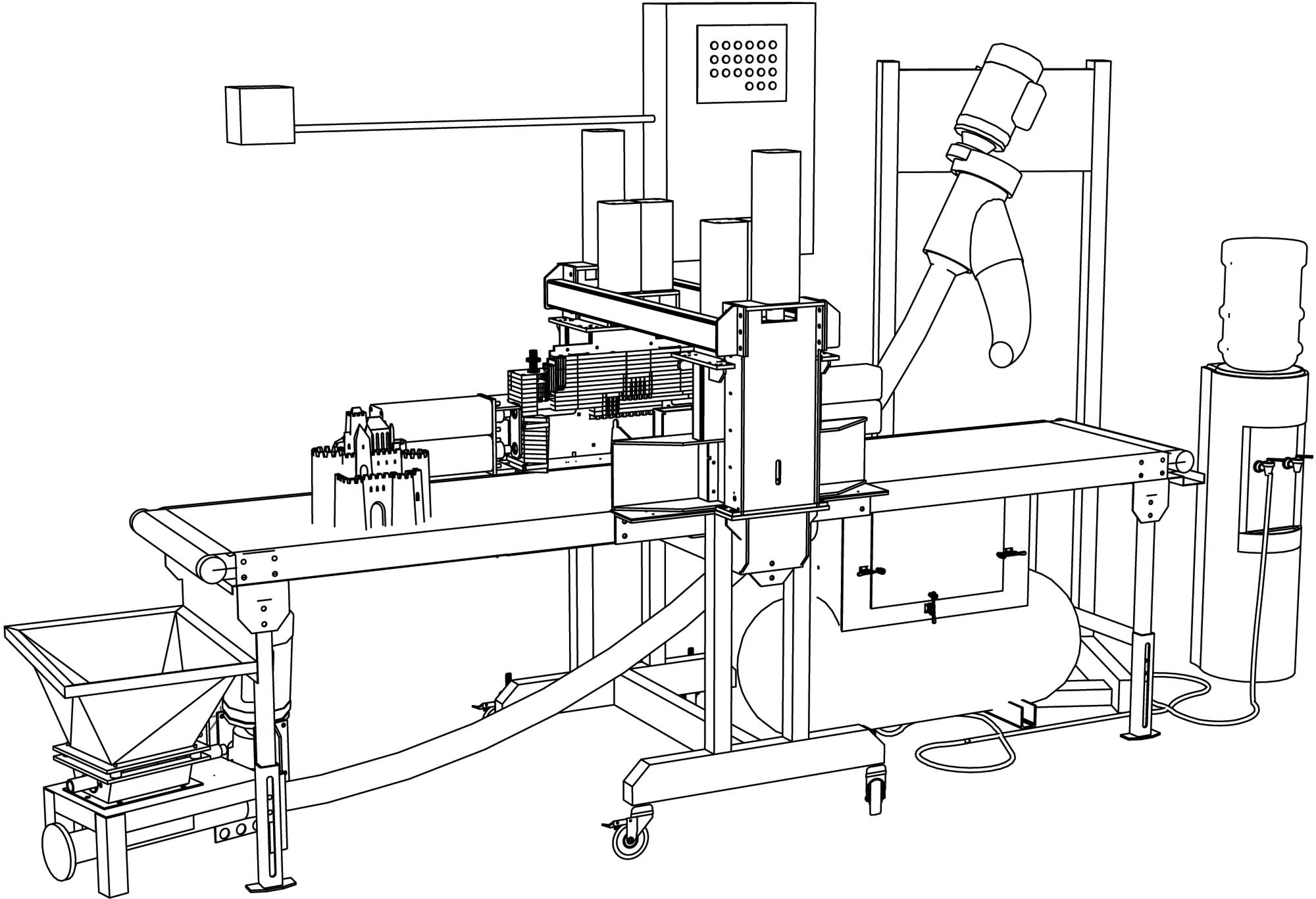

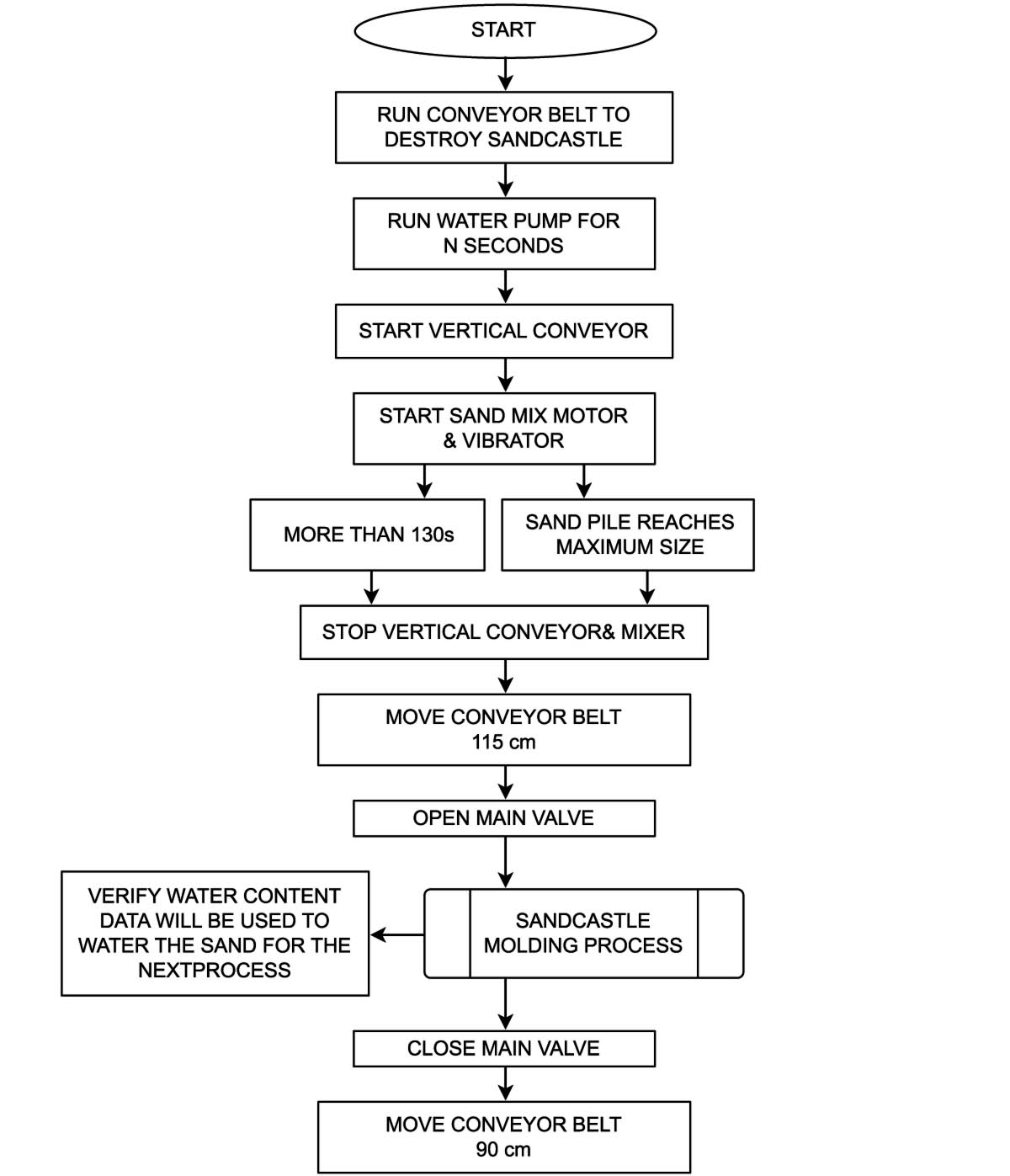
Created by
Michel de Broin
Curated by
Dawn Cain, Curator, BMO Corporate Art Collection
Assisted by
Elisa Coish, Curatorial Associate, BMO Corporate Art Collection
Development and studio assistance by
Antonio Bacichetti
Jérôme Roy
Samuel Saint-Aubin
Matthew Palmer
Fred Monast
Pascal Dufaux
Electronics and programming by
Antonio Bacichetti
Samuel Saint-Aubin
Metal work by
Jérôme Roy
Paul Duchaine
Métal CN
Electrical by
H.M.B. Controls Ltd.
Consultants
Luc Doyon
Pierre Fournier
Jean-Pierre Aubé
Cristian Costea (ASCO Numatics)
Jonathan Killing (Toque Innovations)
Sebastien Dallaire (Generique design)
Video by
Jean-Pierre Aubé
Photography by
Michel de Broin
Project room photography by
Toni Hafkenscheid
Installation assistance by
Brian Gravestock
Dustin Baldwin
Erik Wiancko
Gallery cards, gallery panel, and invitation designed by
Michelle Astrug
Website design and production by
Gordon Hicks
Acknowledgements:
I am grateful for the contributions of all who assisted in this project and to Galerie Division for
their ongoing support. And a final thank-you to BMO Financial Group for commissioning this work.
—Michel de Broin
Castles Made of Sand ran in the BMO Project Room from April to November 2016. The exhibition is now closed.
For more information about this exhibition please contact the BMO Curator at curator( at )castles-made-of-sand.ca.
Contact the BMO curator:
curator( at )castles-made-of-sand.ca
Contact the artist:
artist( at )castles-made-of-sand.ca